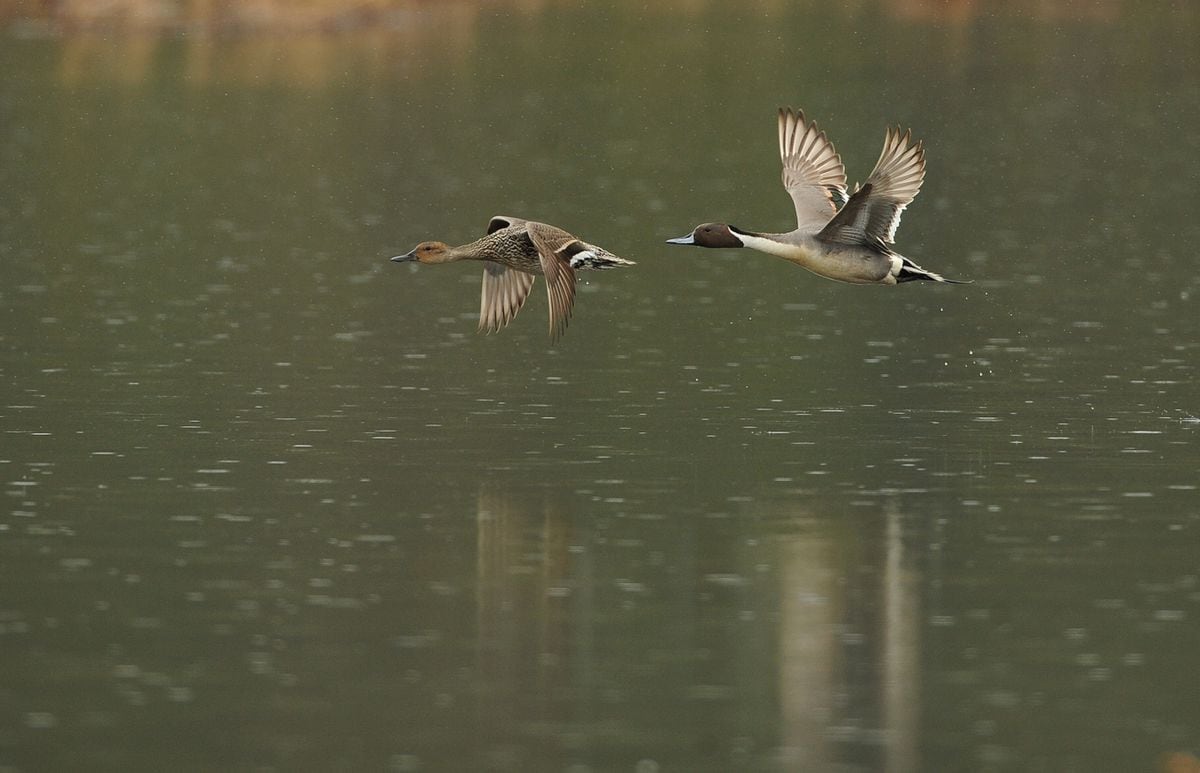
Alaska is home to so many waterfowl species you’d think there would be duck hunters everywhere and every other house would have a black Lab at the door.
Doesn’t everyone’s junk drawer overflow with 12-gauge shot shells?
Few hunters know a mallard from a scaup — or even know what a scaup is. A lesser scaup is the duck your retriever can’t get. A wounded scaup will dive and resurface with only the tip of his bill and eyeballs showing.
The smart waterfowler won’t waste $1 shot shells in an attempt to eradicate it. Instead, he might send a smart German shepherd out on the retrieve. The shepherd will watch and wait until the duck swims to the bank to hide, and then pick up the bird.
Scaup, both greater scaup and lesser scaup, are common on most of Alaska’s larger lakes. They will decoy during the fall migrations, but honestly, Alaska doesn’t have enough concentrations of these birds to make the big raft of decoys that is required to make decoying worthwhile.
Additionally, while scaup and the closely related scoter are excellent eating, they are a bugger to get the feathers off.
The birds are best cooked Native style. Clean the bird and leave the feathers on the body. Stuff it with apples, bread cubes, cinnamon and raisins and fire the oven to 350 degrees. Wrap the duck, feathers and all, in tinfoil.
Most diving ducks will take a little more than an hour to cook properly. When the bird is finished, the skin and feathers will peel off neatly and you’ll have a nice, juicy, tender duck.
Pintails, mallards, widgeon, green-wing teal and shovelers are all common in Alaska, and the most commonly hunted ducks are pintails and mallards. American widgeons run close.
Fall pintails are medium-brown colored ducks included in a classification known as puddle ducks or dabblers, which feed on the surface and do not dive to feed.
Mallards are generally considered the most desirable. They are the largest of the dabblers. Green-wing teal taste the best, but are small. Shoveler ducks fly slow and are easy to recognize with their shovel-like bill. Don’t waste your powder; they taste like mud.
Pintails are smart. They twist and turn their long necks and can spot hidden hunters and poorly placed decoys quite easily. If you stand up from your hideout too soon they can climb out of range like an F-15. The pintails’ weakness for returning to their commonly used feeding locations make them vulnerable.
American widgeon are the beagles of the duck world. They are easy-going ducks that aren’t too bright. They will decoy to a Lab that is attempting to out-swim a diver, even with the hunter standing on the shoreline.
Alaska carries a few blue-wing teal and and some harlequin. Bufflehead, small ducks with distinctively large heads and a white spot behind their eye, are another species that will appear in a hunter’s bag. Canvasbacks, ring-neck ducks, old squaw, barrows and common goldeneye pretty much fill out the waterfowl in the Interior regions.
Hunters who actually notice waterfowl, particularly ducks, are a special breed. Duck hunters who read this will understand perfectly that Sept. 1 has little to do with the opening day of moose season — it’s waterfowl season. They will be at lakes, sloughs and tidal flats along with their dogs and decoys on that day.
Labs are by far the most common dog, and arguably the best. They make great house pets for eleven and a half months. And then, they tremble with excitement when they smell the shotgun and hear the rattle of shot shells.
Sure, Labradors, Chesapeakes and a few other retriever breeds get to work upland birds at other times of the year, but ducks — ah, ducks. They are in a class of their own.
Imagine rising on an icy, foggy morning, long before daylight and shivering your way to your favorite swamp.
Your dog is bouncing at your side, too wound up to stay at perfect heel. Soon you are crouched in the grass by your decoys waiting for the legal opening, one half-hour before sunrise.
The whistle of wings overhead and the low call of “ducks” from your buddy in the neighboring blind brings you fully to life. Pintails, those are pintails! You are a duck hunter, a rare breed in Alaska.
John Schandelmeier is a lifelong Alaskan who lives near Paxson with his family. He is a Bristol Bay commercial fisherman and a two-time winner of the Yukon Quest.
"filled" - Google News
July 18, 2021 at 07:40AM
https://ift.tt/3kyGZWi
Alaska's skies are filled with ducks, though many of its hunters don't seem to notice - Anchorage Daily News
"filled" - Google News
https://ift.tt/2ynNS75
https://ift.tt/3feNbO7
Bagikan Berita Ini














0 Response to "Alaska's skies are filled with ducks, though many of its hunters don't seem to notice - Anchorage Daily News"
Post a Comment